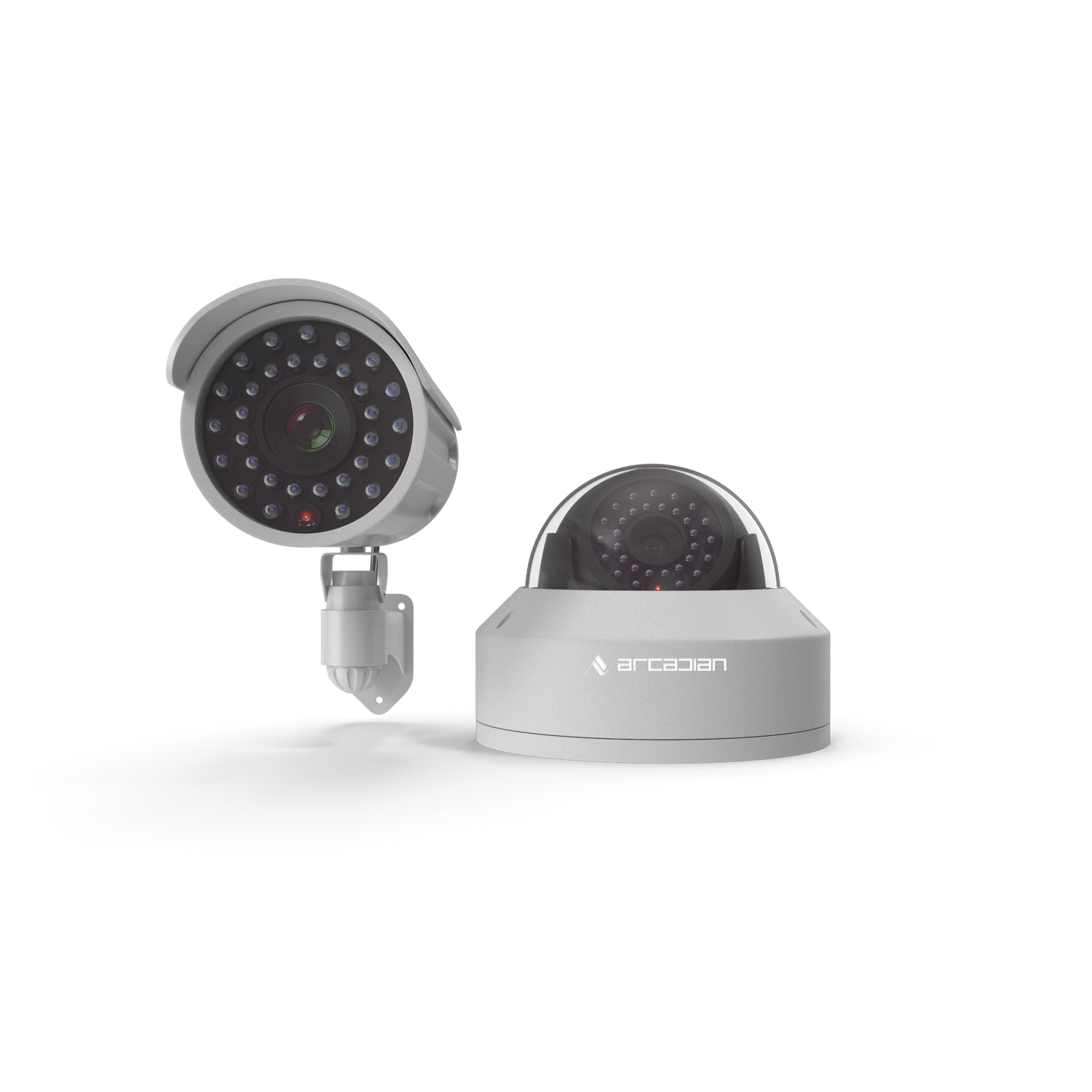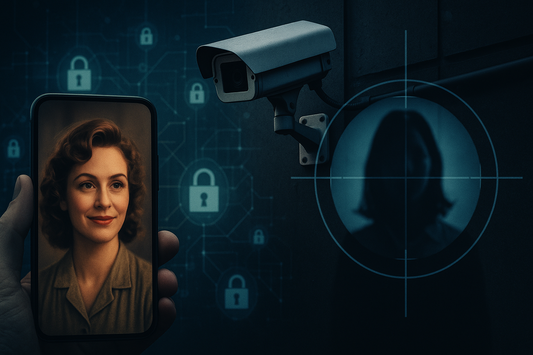How AI is Revolutionizing Security: A Deep Dive into Preventive Measures
In an era where digital and physical threats loom larger than ever, security has become a top priority for individuals, businesses, and governments alike. Traditional security measures—think firewalls, locked doors, and human patrols—have served us well, but they’re increasingly outmatched by the complexity and speed of modern threats. Enter Artificial...

In an era where digital and physical threats loom larger than ever, security has become a top priority for individuals, businesses, and governments alike. Traditional security measures—think firewalls, locked doors, and human patrols—have served us well, but they’re increasingly outmatched by the complexity and speed of modern threats. Enter Artificial Intelligence (AI), a transformative force that’s redefining how we protect our assets. AI isn’t just enhancing security; it’s revolutionizing it by shifting the paradigm from reaction to prevention. In this deep dive, we’ll explore how **AI-driven security solutions** are leveraging predictive analytics, real-time threat detection, automated responses, and advanced physical security systems to create a safer world—all while inviting you to experience these innovations firsthand with a free demo of Arcadian.ai’s Ranger.
---
The Growing Need for Preventive Security
The stakes have never been higher. Cyberattacks cost businesses trillions annually, with the average data breach price tag hitting $4.45 million in 2023, according to IBM. Meanwhile, physical security incidents—like theft, vandalism, or unauthorized access—continue to challenge traditional methods. Criminals and hackers alike are getting smarter, using sophisticated tools to exploit vulnerabilities faster than humans can respond.
Traditional security often operates in a reactive mode: detect a breach, then scramble to contain it. But what if we could stop threats *before* they happen? That’s where **AI in security** shines. By analyzing vast datasets, identifying patterns, and acting autonomously, AI offers **preventive security measures** that anticipate and neutralize risks proactively. Let’s break down how this revolution is unfolding.
---
Predictive Analytics: Seeing Threats Before They Strike
Imagine having a crystal ball for security—one that doesn’t just guess but uses hard data to predict the future. That’s what **predictive analytics for security** delivers. AI systems sift through mountains of information—network logs, user behavior, historical attack data, even social media chatter—to spot the warning signs of a breach.
How It Works
AI employs machine learning models to identify patterns that humans might miss. For instance, a sudden spike in failed login attempts from an unusual IP address could signal a brute-force attack. By cross-referencing this with historical data, AI can predict the likelihood of a breach and alert security teams—or even take action itself.
Real-World Impact
Consider a financial institution using AI to monitor transactions. The system flags a series of small, irregular withdrawals that don’t align with a customer’s typical behavior. Before a human analyst could even review the case, the AI locks the account, preventing a potential theft. Gartner reports that organizations adopting **predictive security** reduce breach risks by up to 30%, showcasing the power of foresight.
In physical security, predictive models analyze surveillance feeds and access logs to anticipate incidents. A retail chain might use AI to predict shoplifting hotspots based on foot traffic and past thefts, allowing managers to deploy staff strategically. This isn’t science fiction—it’s **security innovation with AI** happening now.
---
Real-Time Threat Detection: Catching Danger in the Act
While prediction looks ahead, **real-time threat detection** keeps watch in the present. AI’s ability to monitor systems continuously and identify anomalies instantly is a game-changer for both cyber and physical security.
Cybersecurity Applications
In the digital realm, AI scans network traffic at lightning speed. Picture a hacker attempting to infiltrate a corporate server. As they probe for weaknesses, the AI detects an unusual pattern—say, a flood of requests from a single source—and flags it immediately. Some systems go further, automatically blocking the IP address before damage occurs.
A standout example comes from a tech firm that thwarted a ransomware attack using AI. The system noticed encrypted files appearing at an abnormal rate and halted the process, saving critical data. Studies show AI-driven detection can cut response times from hours to seconds.
Physical Security Wins
On the physical front, **smart surveillance systems** powered by AI are transforming how we monitor spaces. These systems use computer vision to analyze video feeds in real-time, spotting threats like unattended bags in airports or loiterers near secure facilities. One major airport reported a 40% drop in security incidents after deploying AI surveillance, proving its effectiveness.
Unlike human guards, AI doesn’t tire or lose focus. It’s always watching, always analyzing, making it an indispensable tool for **real-time threat detection**.
---
Automated Response Systems: Acting Faster Than Humans
Detecting a threat is only half the battle—responding to it is what counts. Here, **automated security response** systems shine, leveraging AI to act swiftly and decisively, often outpacing human capabilities.
Cybersecurity Automation
In a cyberattack, every second matters. AI can isolate compromised systems, block malicious traffic, or deploy patches—all without waiting for a human to intervene. For example, during a phishing attempt, an AI system might detect a malicious email, quarantine it, and warn users across the network in milliseconds. The Ponemon Institute found that automation slashes breach costs by 25%, a testament to its efficiency.
Physical Security Automation
In physical settings, AI triggers rapid responses too. Imagine a warehouse where an AI detects a break-in via motion sensors and camera feeds. It instantly locks down exits, sounds alarms, and notifies law enforcement—all while the intruder is still on the premises. This speed can mean the difference between a minor incident and a major loss.
By reducing human error and delay, **automated security systems** ensure threats are neutralized before they escalate, offering peace of mind and tangible savings.
Enhancing Physical Security: AI as the Ultimate Guardian
AI isn’t just a digital defender—it’s revolutionizing **physical security** through smart surveillance and advanced access control. These technologies create a seamless shield around facilities, assets, and people.
Smart Surveillance Systems
Gone are the days of grainy footage reviewed after the fact. AI-powered cameras analyze live video, identifying suspicious behavior with uncanny accuracy. They can distinguish between a delivery worker and a potential thief, reducing false alarms and sharpening focus on real threats. Integrated with facial recognition, these systems can spot known offenders or grant access to authorized personnel.
A casino in Las Vegas, for instance, used AI surveillance to catch card counters, cutting losses by millions. The tech flagged subtle behavioral cues—like hesitation before betting—that human guards missed.
AI Access Control
Access control gets smarter with AI too. Traditional keycards and PINs are static and vulnerable, but AI systems adapt. They learn employees’ routines, flagging anomalies like late-night entry attempts for further verification. If a badge is swiped at an odd hour from an unfamiliar location, the system might require a biometric scan, ensuring only the right people get in.
Together, these advancements make physical spaces more secure than ever, blending cutting-edge tech with practical protection.
The Future of Security Technology: What’s Next for AI?
The AI security revolution is just beginning. Emerging trends promise to push **preventive security measures** even further, keeping us ahead of evolving threats.
Quantum Computing and Encryption
Quantum computing could soon bolster encryption, making data virtually unhackable. AI will play a key role in managing these complex systems, ensuring they’re both secure and user-friendly.
### Edge AI for Instant Action
Edge AI processes data locally—on cameras or devices—rather than in the cloud, slashing latency. This means faster threat detection and response, critical for time-sensitive scenarios like industrial safety or border security.
### Federated Learning for Privacy
Federated learning lets AI models train across decentralized devices without sharing sensitive data. This boosts privacy while enhancing security, ideal for industries like healthcare or finance.
Businesses that embrace these trends will lead the charge in **security innovation with AI**, staying resilient against tomorrow’s challenges.
Why AI Matters for Your Security Strategy
The evidence is clear: AI is setting a new standard for security. It predicts what’s coming, detects what’s happening, responds in real time, and fortifies physical defenses—all with a precision and speed humans can’t match. For organizations, this translates to lower risks, reduced costs, and greater confidence.
But reading about AI’s potential is one thing—seeing it in action is another. That’s why we’re excited to offer you a chance to experience **AI-driven security solutions** firsthand. Our product, Ranger, is an AI security guard designed to proactively protect your digital and physical assets. Curious? We invite you to try Ranger with a **free demo and trial**. Schedule yours today by clicking [here](#) and discover how Ranger can transform your security strategy, delivering peace of mind in an uncertain world.
Conclusion: A New Era of Preventive Security
AI isn’t just a tool—it’s a revolution. From **predictive analytics for security** to **automated security response**, it’s reshaping how we safeguard what matters most. As threats grow more sophisticated, so must our defenses. AI offers a proactive path forward, blending innovation with practicality to create a safer tomorrow.
Don’t just take our word for it—see the difference for yourself. Sign up for a free demo and trial of Ranger, Arcadian.ai’s cutting-edge AI security guard.

Security is like insurance—until you need it, you don’t think about it.
But when something goes wrong? Break-ins, theft, liability claims—suddenly, it’s all you think about.
ArcadianAI upgrades your security to the AI era—no new hardware, no sky-high costs, just smart protection that works.
→ Stop security incidents before they happen
→ Cut security costs without cutting corners
→ Run your business without the worry
Because the best security isn’t reactive—it’s proactive.







